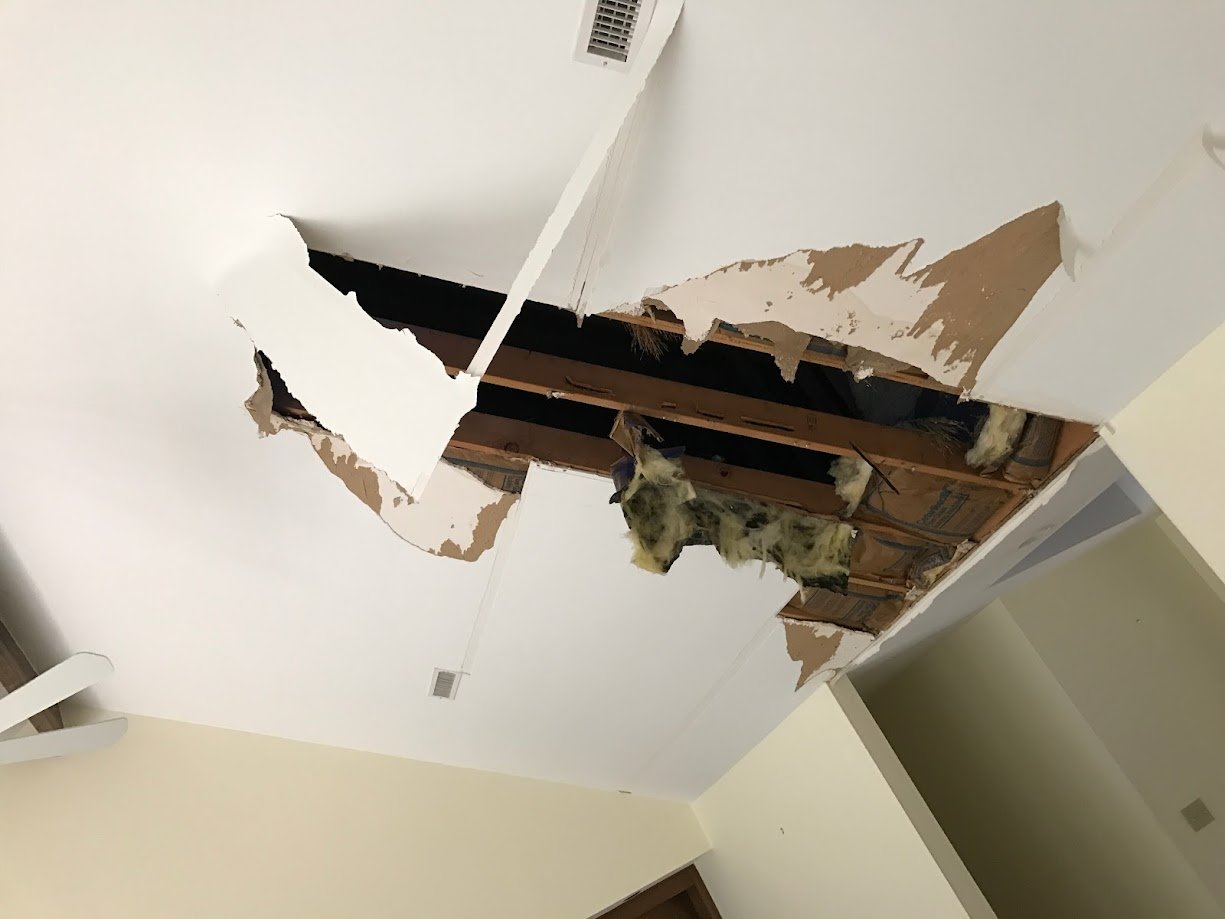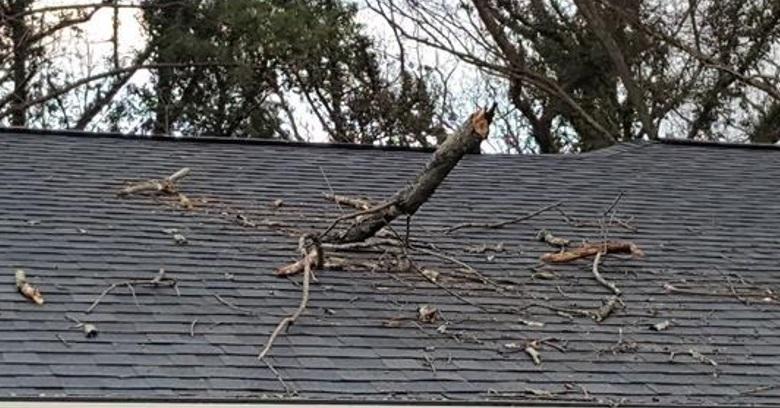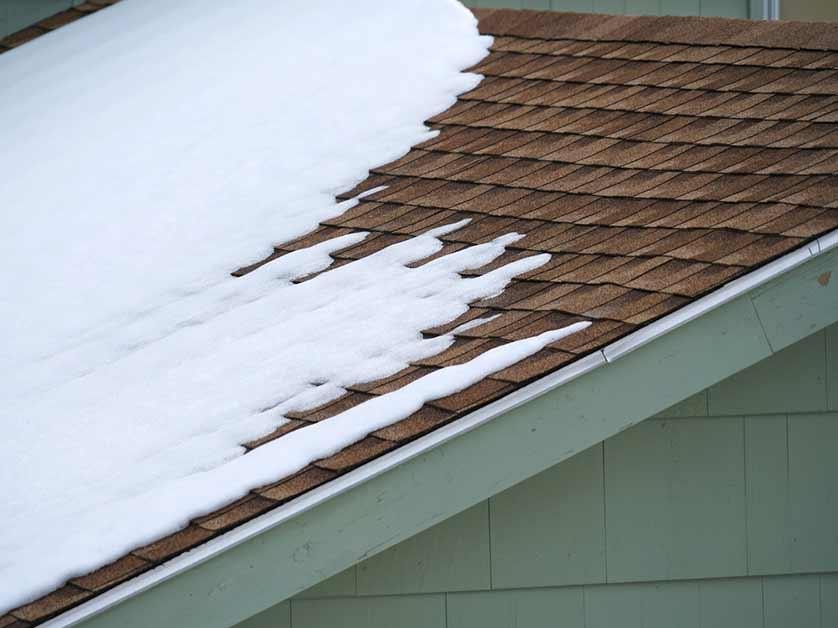
Types of Weather That Commonly Damage Roofs in Louisiana
Understanding the Types of Weather That Cause Damage to Your Roof in Louisiana

Your roof is one of the most important parts of your home, protecting you and your family from the elements. However, in Louisiana, the weather can be especially harsh on roofing systems, causing significant damage over time. From the intense summer heat to the powerful storms that sweep through the region, understanding the types of weather that can damage your roof is crucial. If you're a homeowner in Baton Rouge, Denham Springs, Walker, Gonzales, Prairieville, Hammond, Kentwood, or Amite, you’ll want to be prepared for the various weather patterns that can affect your roof's health.
1. Heavy Rain and Hurricanes

Louisiana is no stranger to torrential rain and hurricanes, especially in areas like Baton Rouge and Denham Springs, which are prone to flooding. When heavy rain falls, it can weaken the roofing material, lead to water infiltration, and cause rot over time. Hurricanes and tropical storms are particularly harmful because they bring high winds and intense rain, often resulting in roof leaks, missing shingles, and significant structural damage.
In coastal regions and places like Gonzales and Prairieville, storm surges can cause widespread flooding, further compounding roofing issues. If your roof isn’t properly maintained or has any weak spots, you’re at a higher risk for severe damage during a storm.
Tip: Ensure your roof is waterproof and regularly check for signs of damage, such as cracked shingles, damaged flashing, and missing roofing materials after a storm.
2. High Winds

Wind gusts, especially those that reach speeds over 50 mph, can cause major damage to your roof. Cities like Hammond and Kentwood, which are more inland, are not immune to windstorms. Wind can lift shingles, loosen flashing, or completely tear off roofing materials, leaving your home vulnerable to water damage.
In some cases, wind can also blow debris like tree branches, leaves, or even smaller objects onto your roof, potentially causing punctures or scarring to the shingles or membrane.
Tip: Trim surrounding trees and remove loose objects near your home to minimize damage caused by wind-blown debris. If you know a high wind storm is coming, pick up or tie down items around the exterior of your home that can be moved by high winds.
3. Extreme Heat and Sun Exposure
The sweltering heat and intense sun of a Louisiana summer can also cause damage to your roof, especially in areas like Walker, Gonzales, and Amite. The high heat can lead to the degradation of roofing materials, particularly asphalt shingles. Over time, ultraviolet (UV) rays break down the shingles’ protective layers, causing them to become brittle and prone to cracking or curling. As the materials weaken, they may start to peel off, leaving the roof vulnerable to leaks and moisture damage.
Tip: Make sure your roof has proper ventilation. Hot air trapped in your attic can substantially shorten the life of your shingles.
4. Freeze and Thaw Cycles

While freezing temperatures are not as common in Louisiana as they are in other parts of the country, they can still occur, particularly in places like Kentwood and Amite. Freeze-thaw cycles happen when the temperature drops below freezing at night and rises during the day. This can cause water that has infiltrated your roof through cracks or gaps to freeze and expand, putting pressure on the roofing materials. As the ice thaws, the materials contract, leading to potential cracks and leaks.
Though Louisiana winters tend to be mild, freeze-thaw cycles can still damage your roof if there is significant moisture in the attic or roofing system.
Tip: Inspect your attic insulation and ventilation to reduce the risk of moisture buildup that can freeze during cold snaps.
5. Hailstorms

Hail is another serious threat to roofs in Louisiana. Areas like Baton Rouge, Denham Springs, and Prairieville are occasionally impacted by severe thunderstorms that bring hail. The size and severity of hail can vary, but large hailstones can cause dents, cracks, extreme granule loss, or punctures in shingles, leaving them vulnerable to leaks. In some cases, hail can completely destroy roofing materials, necessitating expensive repairs or replacements.
Tip: After a hailstorm, check for signs of damage, such as pockmarks or cracked shingles, and contact a professional roofing contractor to assess the extent of the damage. Hail damage is typically easier to spot on sheet metal around your home like gutters. Hail damage will look like small dent marks.
6. Humidity and Mold Growth

Louisiana’s humid climate, especially in cities like Baton Rouge and Hammond, creates the perfect conditions for mold and mildew growth on roofs. Excess moisture in the air can penetrate your roofing system, particularly in poorly ventilated areas, leading to mold growth. Over time, mold can weaken the structure of your roof and contribute to the deterioration of roofing materials. Additionally, mold can lead to unpleasant odors and potential health risks.
Tip: Ensure your attic is well-ventilated to reduce moisture buildup. Regularly clean gutters and downspouts to prevent water from pooling on your roof. To prevent algae buildup on the exterior of your roof make sure all trees and bushes are trimmed away from your house. Shingle manufacturers also make shingles with algae protectant on them that can help prevent unsightly streaks or spots of moss that can grow on your roof.
Protecting Your Roof in Louisiana’s Harsh Weather
Given the unique weather challenges in Baton Rouge, Denham Springs, Walker, Gonzales, Prairieville, Hammond, Kentwood, and Amite, it’s essential to stay proactive when it comes to roof maintenance. Regular inspections and proper care can help extend the life of your roof and prevent costly repairs.
Regular Roof Inspections: Schedule a roof inspection at least once a year and after major weather events like hurricanes or storms.
Gutter Maintenance: Keep gutters and downspouts clean to avoid water pooling on the roof and causing leaks.
Roof Ventilation: Make sure your roof has proper ventilation to protect your roof from overheating or causing a buildup of humidity.
Storm Preparation: Secure loose objects and trim nearby trees to prevent wind damage.
By staying on top of your roof’s condition and addressing any weather-related issues promptly, you can ensure your home in Louisiana remains safe and secure, no matter what Mother Nature throws your way. As always, feel free to call or text Hook Roofing and Construction for all your roof related issues.